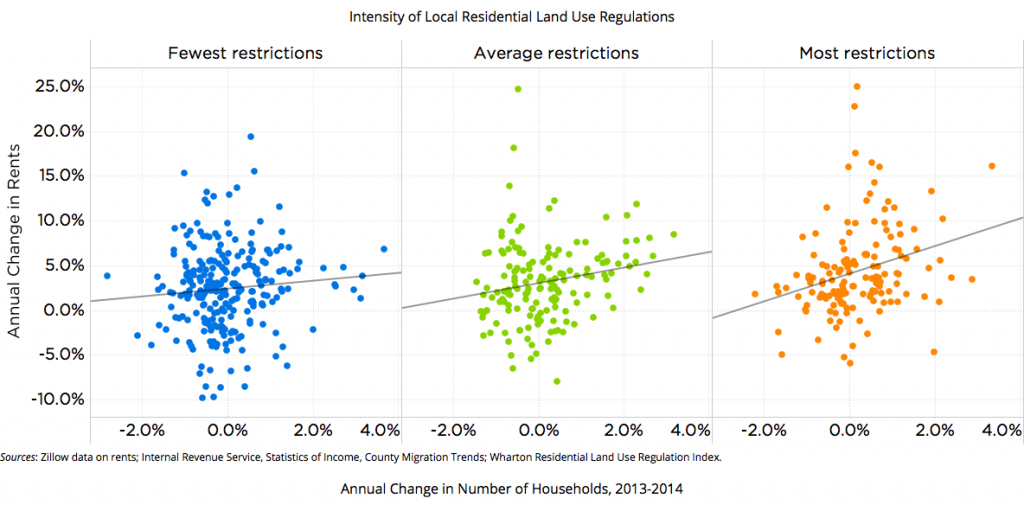Hot or Not: How National Trends Intersect With Your Local Market

April 4, 2018
3 min read
In most markets across the nation, it’s a great time to be in the rental business. After slowing in 2015, rent growth is starting to speed up again, especially in certain areas. And vacancy rates are starting to stabilize after steadily declining for several years. But what does this mean in your market?
Your area’s dynamics can vary greatly from the metropolitan area nearest you, or even from city to city. And in some metros, the city centers are heating up — in others, it’s the outlying areas.
Understanding what drives these dynamics — including job growth, supply, the rate of residential construction and regulation on it — helps you understand what’s in store for your communities.
In addition to these market drivers, local dynamics can help you understand what your business will be like in the future. Will you be scrambling to keep up with demand, or will you have time to plan for future improvements and growth? Will you be dealing with renters doubling up to save money, or are they moving farther away from the city centers so they can afford their rent?
Dr. Skylar Olsen, senior managing economist at Zillow Group, recently hosted a webinar to discuss these dynamics, how they’re currently effecting markets and how to prepare for what the future holds in your market.
Drivers of heat
National trends intersect with local trends to create your area’s unique rental climate. One of the biggest trends over the past few years has been the effect of new supply on rental growth.
Around 2015, new construction spiked in response to increased demand. Those new properties came online and took the pressure off nationally, slowing rent growth.
More recently, rent growth and demand have steadily increased, though the rate has varied for different metropolitan areas. And even if you drill down into these areas, you might see variances between downtown and the outlying neighborhoods. This dynamic is driven by the rate at which certain areas have been able to keep up with increased demand.
Residential construction regulations are another key indicator in your local market. For example, single-family versus multifamily zoning, the building permit process and wait times, lot size restrictions and the like could all restrict building. Rent has grown more in highly regulated areas because the pressure on the market remains.

Since the Great Recession, permits for new multifamily buildings have recovered to near pre-recession levels. In areas where new multifamily building has prospered because of density or favorable regulations, competition for open rentals has lessened, and rent increases have started to slow. In fact, rent appreciation has grown more where construction is most regulated.
Demand dynamics are important, too. The younger generations are some of the largest ever, guaranteeing a steady supply of renters down the line. But millennials are getting older and starting families. As this happens, they gravitate toward single-family housing — either to rent or own — to make room for growing families.
In fact, renting single-family homes has become increasingly popular in the last 10 or more years. This trend has seen multifamily rents (while still higher than rents for single-family homes) slow considerably compared to single-family rent growth.
Affordability and the rental market
As interest rates have remained low over the past decade, the share of income homeowners spend on their mortgage is well below historical levels. However, rents have become historically unaffordable compared to previous decades before the housing bubble.
Even in markets that seem more affordable, say Detroit versus Los Angeles, this is true. People who have been living and renting in these areas for a long time are especially feeling this increase in the amount of their income going toward rent.
Some of these renters are starting to move farther away from the city center, where many of them work, trading a longer commute for affordability. Others are moving away altogether to more affordable metros like Pittsburgh or St. Louis. Still others are living with roommates at rates increasing over the years and across all age groups — even older generations.
As affordability becomes more of an issue, people are moving, and companies are thinking about where they can relocate to take advantage of the migration and affordable conditions. If you’re a landlord in some of the areas where rent has grown the fastest, expect some slowdown over the next couple of years. But if you’re in one of the more affordable areas, competition for your rental — and, as a result, rent prices — will start to creep up.
As rent becomes more unaffordable, saving for a down payment gets harder, making buying a home increasingly difficult. Consequently, as the population ages and wants more space for their growing families, they are remaining renters (though many prefer single-family homes).
Connect with us!
Learn how Zillow Rentals can help you reach your goals.
Stay informed. Stay ahead.
Access exclusive industry insights, market trends, and expert tips. Subscribe now to receive quarterly Zillow Rentals newsletters!